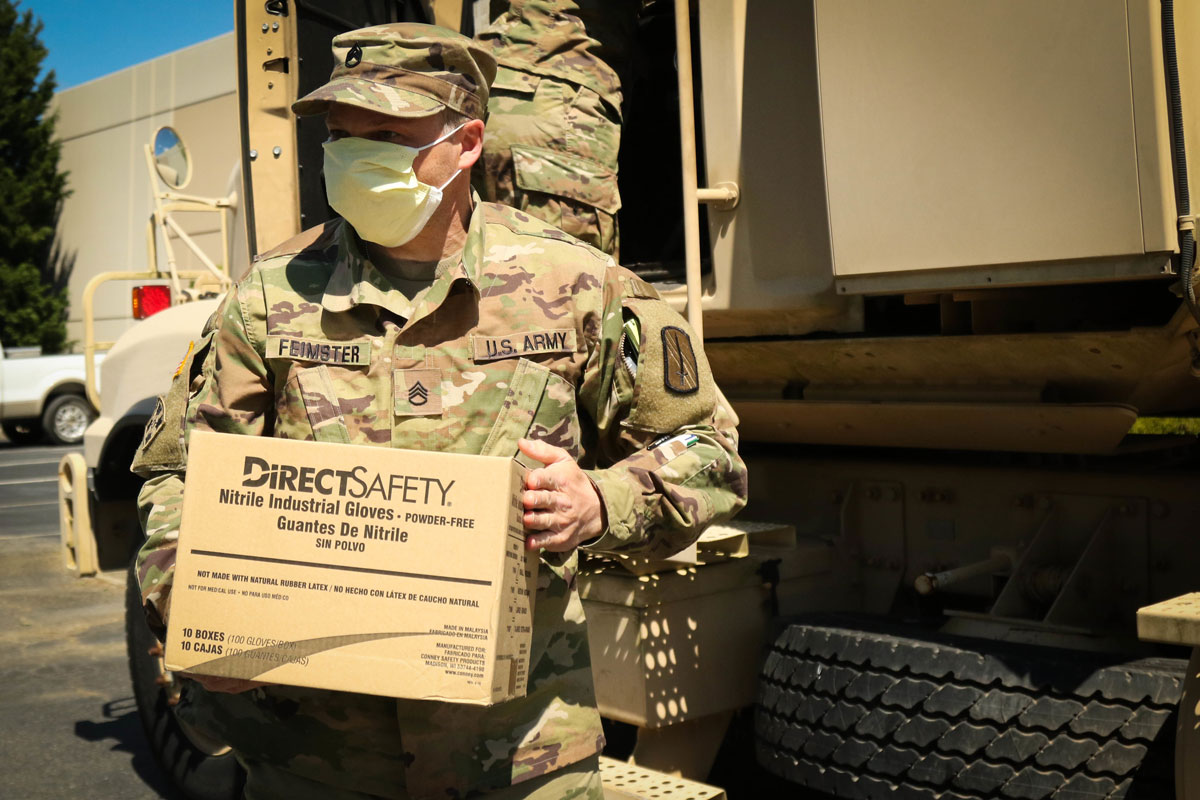
Many offices are looking deserted, like this one at the U.S. Army Corps of Engineers, Engineering and Support Center in Huntsville, Alabama, while many government workers practice social distancing through maximizing telework. (Photo by Catherine Carroll, U.S. Army Engineering and Support Center)
Best practices and resources for working from home
by Jacqueline M. Hames
When the coronavirus pandemic arrived, it changed the way the government does business on a day-to-day basis. The health and safety of employees became the No. 1 priority for the Army Acquisition Workforce and the Army at large.
In a recent press conference, Dr. Bruce D. Jette, assistant secretary of the Army for acquisition, logistics, and technology, emphasized that it is important to avoid putting workers at risk while acknowledging that some positions cannot be done remotely. “Welding can’t be teleworked,” he said. However, it is critical that everyone “get down to the important parts of what has to be done to complete the mission”.
Thirty years ago, telework would not have been possible this way. Even 20 years ago, we may have had the ability, but it would have been a struggle to enact government-wide, sustained telework. Now, with social isolation practices in place to mitigate the spread of the virus, many jobs were fast-tracked into telework—and all the trials and tribulations that might come with it. The United States Army Acquisition Support Center (USAASC) at Fort Belvoir, Virginia, started 100 percent telework during the middle of March, with the exception of essential personnel, and we at Army AL&T thought it would be good to compile some best practices and resources for telework so you don’t have to.

Some jobs, both military and civilian, cannot be done remotely—like welding or vehicle maintenance, medical services, and other essential positions. Thank you to those still “at the office” during this crisis! Here, North Carolina National Guardsmen Staff Sgt. Ashley Feimster delivers personal protective equipment to Emergency Management located in Western, N.C., April 10, 2020. (U.S. Army National Guard photos by Spc. Hannah Tarkelly, 382nd Public Affairs Detachment/Released).
Between federal guidelines, USAASC teleworking protocols and industry best practice lists from Forbes, Bloomberg Law and USA Today, we have distilled the top six tips for telework:
- Create a dedicated workspace. Designate a corner of your environment exclusively for work, even if it isn’t a full office set up. Keep all your work related things there and make sure it is comfortable for you.
- Keep a regular routine. Routines create structure and put us in the right mindset for the task ahead. Your routine will vary with your own level of comfort but, in general, establish a routine that includes getting dressed—even if it’s just daytime jammies—and planning out your work for the day.
- Set boundaries. Keep your work life separate from your home life. Don’t let work-related papers drift into your entertainment space and be sure to maintain regular work hours. Be done for the day when you’re done for the day. Have telework co-workers in your space? Create a shared schedule with them so you’re not interfering with each other’s tasks (don’t hog the bandwidth).
- Communicate consistently. Check in with your teammates regularly, even if you don’t have a teleconference scheduled. Ensure your digital communications are clear. Now, more than ever, our communication abilities are key to success.
- Take regular breaks. Step away from your work occasionally as you would at the office. Get a cup of coffee or glass of water. Take five minutes outside to get some fresh air. Eat your lunch away from your workspace. Breaking up the workday will help keep you from feeling trapped or overwhelmed.
- Be vigilant in your security practices. When we’re working from home, some may be more inclined to be lackadaisical in cyber security; however, it is extremely important that we adhere consistently to our mandated security practices with government equipment—don’t use portable media drives, beware of email scams and ensure you update your computer regularly.
TOOLS OF THE TRADE
Let’s discuss collaboration and communications resources. There are two federally approved video conferencing systems: Microsoft Teams and Defense Collaboration Services (DCS). Microsoft Teams was deployed recently. It supports video conferencing, screen sharing, instant messaging and recording meetings, with the ability to host live events with thousands of people. Coordinate with your IT section to learn more about how to use the system and what restrictions there are, if any.
DCS is a Defense Information Systems Agency product that also supports video conferencing, screen sharing and instant messaging, and has the ability to record meetings. You access the system using your Common Access Card to use the screen share, video conference and instant messaging features, but people without a card can dial-in for audio participation with the phone number provided when you set up a meeting. For the best functionality, you’ll need to use the Firefox or Chrome web browsers. The setup is a bit complicated, so be sure to do a few practice sessions before any real meetings—use the tutorials to help you through: https://conference.apps.mil/conference/guides/training.
Of course, you can find many other tips, resources, reports and regulations at the inter-agency website, Telework.gov, the official teleworking site of the federal government. From teleworking myths to guidelines on how to start a program in your organization, this site has everything you need related to federal telework.
Subscribe to Army AL&T News – the premier online news source for the Army Acquisition Workforce.
![]() Subscribe
Subscribe







